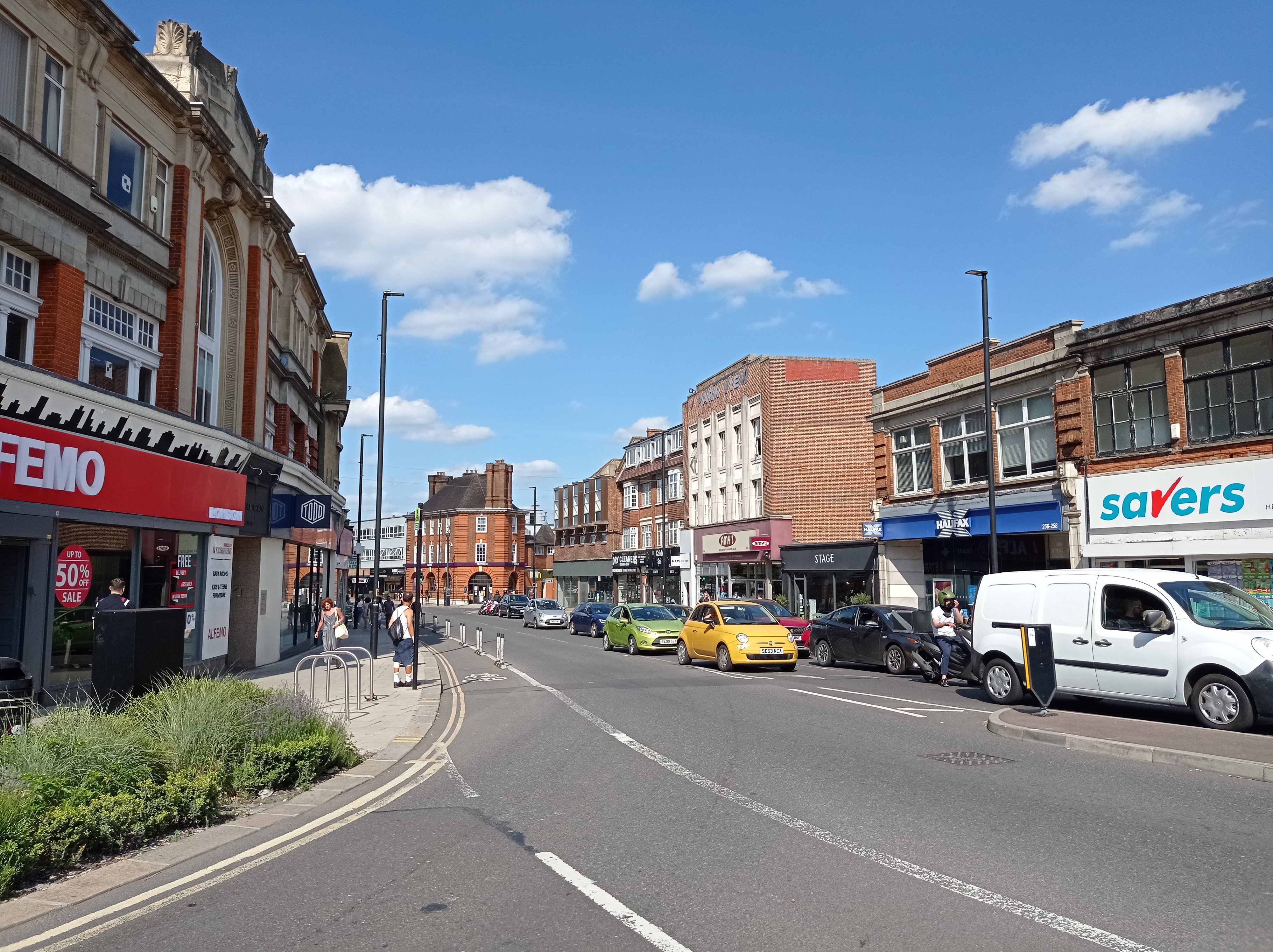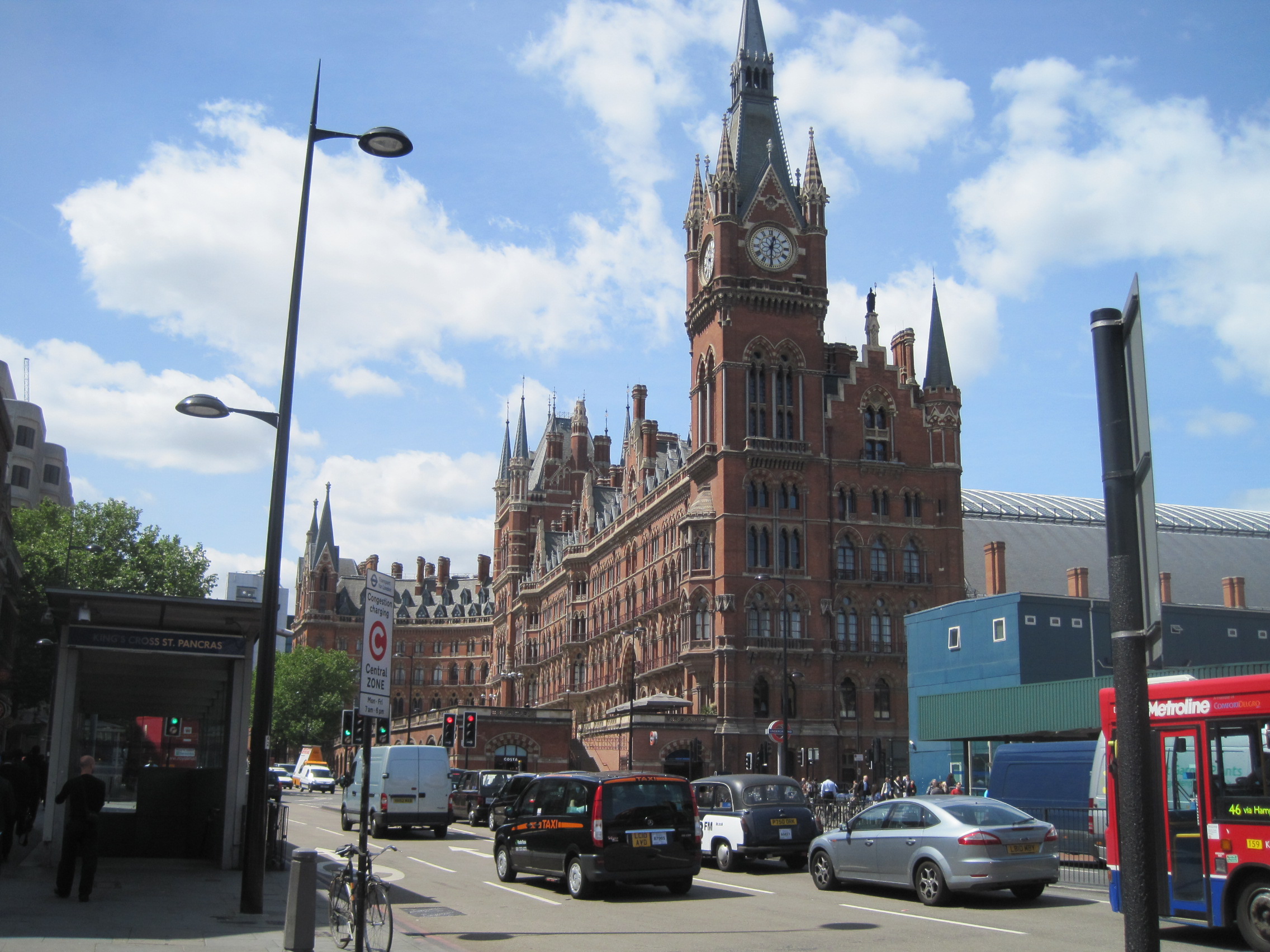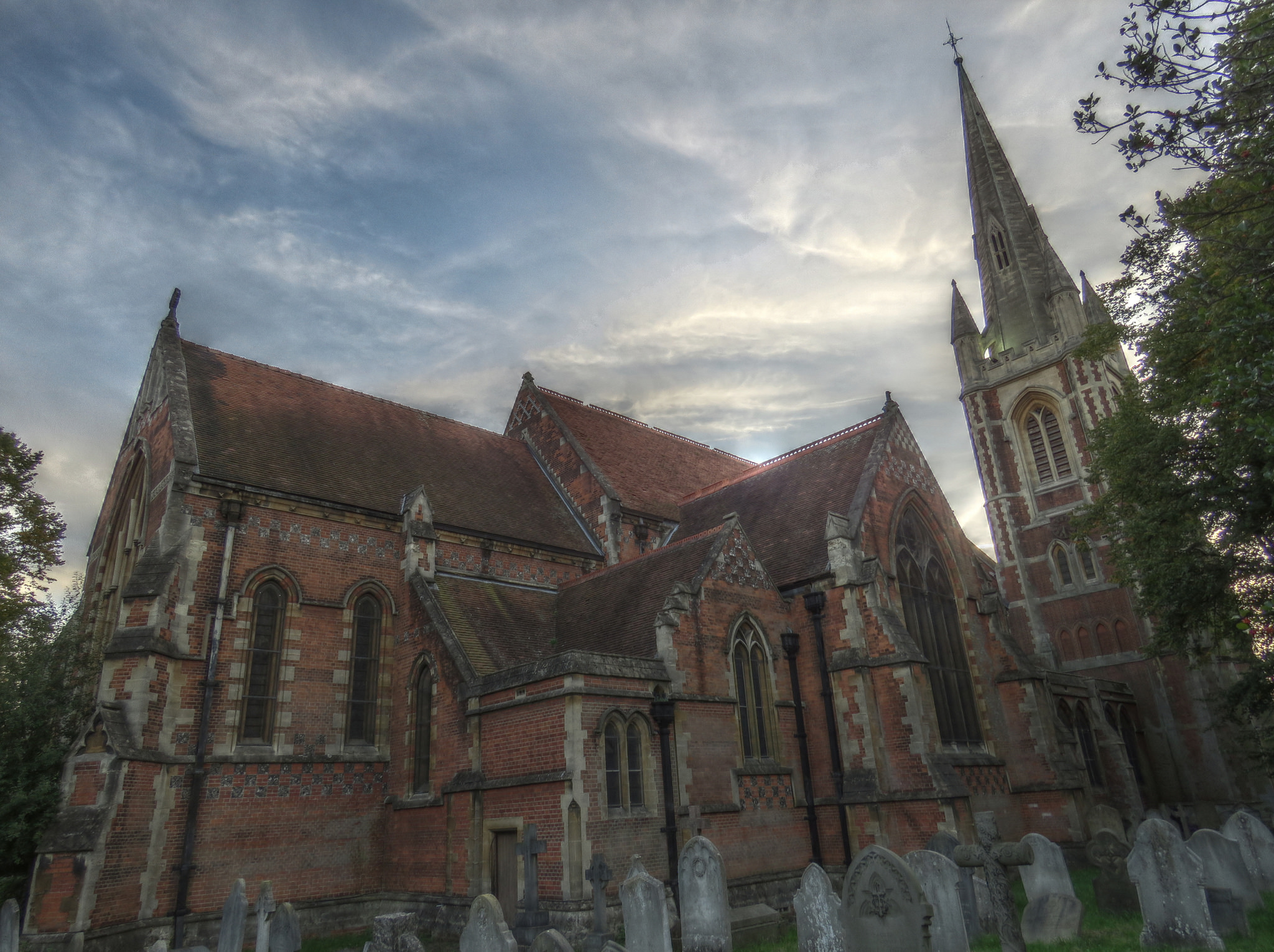|
St John The Evangelist, Palmers Green
St John the Evangelis, Palmers Green is the parish church of Palmers Green, London Borough of Enfield, North London. It was designed by John Oldrid Scott (brother of George Gilbert Scott Junior) in 1903–9. References External links * Palmers Green Palmers Green is a suburban area and electoral ward in North London, England, within the London Borough of Enfield. It is located within the N13 postcode district, around north of Charing Cross. It is home to the largest population of Greek Cy ... Diocese of London Palmers Green {{London-church-stub ... [...More Info...] [...Related Items...] OR: [Wikipedia] [Google] [Baidu] |
Parish Church
A parish church (or parochial church) in Christianity is the church which acts as the religious centre of a parish. In many parts of the world, especially in rural areas, the parish church may play a significant role in community activities, often allowing its premises to be used for non-religious community events. The church building reflects this status, and there is considerable variety in the size and style of parish churches. Many villages in Europe have churches that date back to the Middle Ages, but all periods of architecture are represented. Roman Catholic Church Each diocese (administrative unit, headed by a Bishop) is divided into parishes. Normally, a parish comprises all Catholics living within its geographically defined area. Within a diocese, there can also be overlapping parishes for Catholics belonging to a particular rite, language, nationality, or community. Each parish has its own central church called the parish church, where religious services take pla ... [...More Info...] [...Related Items...] OR: [Wikipedia] [Google] [Baidu] |
Palmers Green
Palmers Green is a suburban area and electoral ward in North London, England, within the London Borough of Enfield. It is located within the N13 postcode district, around north of Charing Cross. It is home to the largest population of Greek Cypriots outside Cyprus and is often nicknamed "Little Cyprus" or "Palmers Greek". Etymology Recorded as ''Palmers grene'' 1608, 'village green associated with a family called Palmer' (mentioned in local records from the 14th century), from the Middle English ''grene''. History Palmers Green was once a tiny hamlet in the parish of Edmonton, situated at the junction of Green Lanes and Fox Lane. Its population was very small, and there were no more than a few isolated houses in the mid-17th century. Local records mention a Palmers Field in 1204 and a Palmers Grove in 1340. Palmers Green is mentioned as a highway in 1324 (in Westminster Abbey Muniments). By 1801 the area had grown to a village of 54 buildings, including two inns (according ... [...More Info...] [...Related Items...] OR: [Wikipedia] [Google] [Baidu] |
London Borough Of Enfield
The London Borough of Enfield () is a London boroughs, London borough in North London. It borders the London boroughs of London Borough of Barnet, Barnet to the west, London Borough of Haringey, Haringey to the south, and London Borough of Waltham Forest, Waltham Forest to the southeast. To the north are the districts of Hertsmere, Welwyn Hatfield and Borough of Broxbourne, Broxbourne (in Hertfordshire), and to the east is Epping Forest District in Essex. The local authority is Enfield London Borough Council. Enfield's population is estimated to be 333,794; the main towns in the borough are Edmonton, London, Edmonton, Enfield, London, Enfield, Southgate, London, Southgate and Palmers Green. Enfield is the northernmost London borough. Etymology Enfield was recorded in Domesday Book in 1086 as ''Enefelde'', and as ''Einefeld'' in 1214, ''Enfeld'' in 1293, and ''Enfild'' in 1564: that is 'open land of a man called Ēana', or 'where lambs are reared', from the Old English ''feld'' w ... [...More Info...] [...Related Items...] OR: [Wikipedia] [Google] [Baidu] |
North London
North London is the northern part of London, England, north of the River Thames. It extends from Clerkenwell and Finsbury, on the edge of the City of London financial district, to Greater London's boundary with Hertfordshire. The term ''north London'' is used to differentiate the area from south London, east London and west London. Some parts of north London are also part of Central London. There is a Northern postal area, but this includes some areas not normally described as part of north London, while excluding many others that are. Development The first northern suburb developed in the Soke of Cripplegate in the early twelfth century, but London's growth beyond its Roman northern gates was slower than in other directions, partly because of the marshy ground north of the wall and also because the roads through those gates were less well connected than elsewhere. The parishes that would become north London were almost entirely rural until the Victorian period. Many of t ... [...More Info...] [...Related Items...] OR: [Wikipedia] [Google] [Baidu] |
John Oldrid Scott
John Oldrid Scott (17 July 1841 – 30 May 1913) was a British architect. Biography He was the son of Sir Gilbert Scott (George Gilbert Scott) and his wife Caroline (née Oldrid). His brother George Gilbert Scott Junior and nephew Sir Giles Gilbert Scott were also prominent architects. In 1868 he married Mary Ann Stevens, eldest daughter of the Reverend Thomas Stevens, founder of Bradfield College. One of his nine children, Charles Marriott Oldrid Scott, worked in his architectural practice. At the end of his career he lived in Peasmarsh, near Rye, East Sussex, and the sale of his farmhouse and 136 acres was mentioned in the national press in 1928. Works *St Stephen's Greek Orthodox Chapel, West Norwood Cemetery: started ''circa'' 1873 * St. Peter's Church, Clayworth, Nottinghamshire: restoration 1874–75 *St Michael and All Angels' Church, Stourport-on-Severn, Worcestershire: continuation of church designed by his father Sir G. G. Scott but unfinished at his death in 1881. ... [...More Info...] [...Related Items...] OR: [Wikipedia] [Google] [Baidu] |
George Gilbert Scott Junior
George Gilbert Scott Jr. (8 October 1839 – 6 May 1897) was an English architect working in late Gothic and Queen Anne revival styles. Known in later life as 'Middle Scott', he was the eldest son of Sir Gilbert Scott (George Gilbert Scott), and father of Sir Giles Gilbert Scott and Adrian Gilbert Scott, all also architects. The last years of his life after the death of his father were marred by mental instability and excessive drinking. He died of cirrhosis of the liver in the Midland Grand Hotel, St Pancras, a building designed by his father. Biography Scott was born on 8 October 1839, in London, eldest son of Sir Gilbert Scott (George Gilbert Scott) and Caroline Oldrid. After a scholarship at Eton College, he began training at his father's office. He was admitted to Jesus College, Cambridge in 1863, taking a first-class degree in moral sciences in 1866 (graduating B.A. 1867, M.A. 1870). During the 1860s and 1870s he worked for his father in his architectural practice. He ... [...More Info...] [...Related Items...] OR: [Wikipedia] [Google] [Baidu] |
Parish Church
A parish church (or parochial church) in Christianity is the church which acts as the religious centre of a parish. In many parts of the world, especially in rural areas, the parish church may play a significant role in community activities, often allowing its premises to be used for non-religious community events. The church building reflects this status, and there is considerable variety in the size and style of parish churches. Many villages in Europe have churches that date back to the Middle Ages, but all periods of architecture are represented. Roman Catholic Church Each diocese (administrative unit, headed by a Bishop) is divided into parishes. Normally, a parish comprises all Catholics living within its geographically defined area. Within a diocese, there can also be overlapping parishes for Catholics belonging to a particular rite, language, nationality, or community. Each parish has its own central church called the parish church, where religious services take pla ... [...More Info...] [...Related Items...] OR: [Wikipedia] [Google] [Baidu] |
Church Of England Church Buildings In The London Borough Of Enfield
Church may refer to: Religion * Church (building), a building for Christian religious activities * Church (congregation), a local congregation of a Christian denomination * Church service, a formalized period of Christian communal worship * Christian denomination, a Christian organization with distinct doctrine and practice * Christian Church, either the collective body of all Christian believers, or early Christianity Places United Kingdom * Church (Liverpool ward), a Liverpool City Council ward * Church (Reading ward), a Reading Borough Council ward * Church (Sefton ward), a Metropolitan Borough of Sefton ward * Church, Lancashire, England United States * Church, Iowa, an unincorporated community * Church Lake, a lake in Minnesota Arts, entertainment, and media * ''Church magazine'', a pastoral theology magazine published by the National Pastoral Life Center Fictional entities * Church (''Red vs. Blue''), a fictional character in the video web series ''Red vs. Blue'' * Churc ... [...More Info...] [...Related Items...] OR: [Wikipedia] [Google] [Baidu] |
Diocese Of London
The Diocese of London forms part of the Church of England's Province of Canterbury in England. It lies directly north of the Thames. For centuries the diocese covered a vast tract and bordered the dioceses of Norwich and Lincoln to the north and west. The present diocese covers and 17 London boroughs, covering most of Greater London north of the River Thames and west of the River Lea. This area covers nearly all of the historic county of Middlesex. It includes the City of London in which lies its cathedral, St Paul's, and also encompasses Spelthorne which is in modern-day Surrey. The ''Report of the Commissioners appointed by his Majesty to inquire into the Ecclesiastical Revenues of England and Wales'' (1835), noted the annual net income for the London see was £13,929. This made it the third wealthiest diocese in England after Canterbury and Durham. The historic county of Essex formed part of the diocese until 1846 when it became part of the Diocese of Rochester, afte ... [...More Info...] [...Related Items...] OR: [Wikipedia] [Google] [Baidu] |




